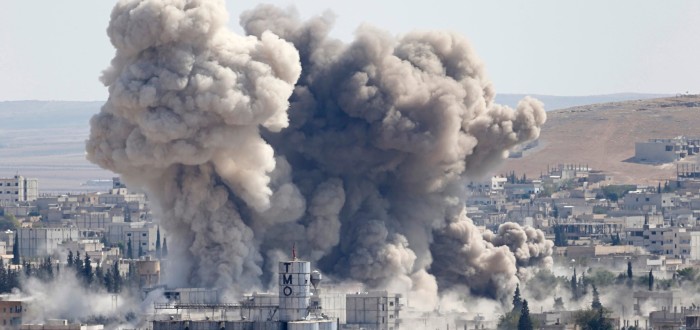The use of explosive weapons in populated areas (EWPA) – particularly those weapons with potential wide-area effects – remains of significant concern to military forces, civil society, and other stakeholders. The International Committee of the Red Cross (ICRC) commissioned Armament Research Services (ARES) to produce a report examining the technical considerations relevant to the use of explosive weapons in populated areas.
Explosive weapons rely on the detonation of a high-explosive substance to create blast, thermal, and often fragmentation effects. The explosive weapons that raise specific concerns when used in populated areas are those having wide-area effects. Explosive weapons might affect a wide area because of the large destructive radius of an individual munition, the relative inaccuracy or imprecision of the delivery system, and/or the delivery of multiple munitions over a wide area. The categories of explosive weapons which may have wide-area effects include large bombs and missiles; indirect fire weapon systems such as artillery guns and mortars, and rockets; and multiple-barrel rocket launchers. Broadly speaking, all weapon effects are contextual, and highly dependent on how, when, and where a munition is employed. However there are technical characteristics inherent to some weapon systems which need to be understood and accounted for.
The report, titled ‘Explosive Weapons in Populated Areas: Technical considerations relevant to their use and effects’ provides an overview of the types of explosive weapons that may be prone to wide-area effects, as well as the factors and variables that determine their effects.
The focus of the report is on conventional explosive weapons, the use of which is not specifically prohibited or otherwise limited by international law (contrary to weapons such as landmines and cluster munitions, which do have specific restrictions imposed by international law). The weapon systems reviewed in this report are frequently encountered on contemporary battlefields, or else commonly held by state security forces and armed non-state actors.
The purpose of the report is to provide background information on the technical characteristics of explosive weapons and other factors relevant to their effects. It is meant to be a general reference document, intended for a comparatively wide audience, and not a handbook for technical specialists.
Part 1 of the report examines the design and effects of explosive munitions. It also addresses concepts such as accuracy, fuzing, the targeting process, collateral damage estimations, battle damage assessments, and more.
Part 2 of the report provides generic information for the broad categories of weapon systems which deliver explosive payloads – artillery guns, mortars, rocket artillery, unguided aerial bombs, and other types. For each weapon category identified, Part 2 provides a description of the technical features relevant to the effects of the weapon. In particular, it includes, where available, estimated blast and fragmentation radius for munition types, estimated circular error probable figures, and other measurable effects.
Read the full report here.
Remember, all arms and munitions are dangerous. Treat all firearms as if they are loaded, and all munitions as if they are live, until you have personally confirmed otherwise. If you do not have specialist knowledge, never assume that arms or munitions are safe to handle until they have been inspected by a subject matter specialist. You should not approach, handle, move, operate, or modify arms and munitions unless explicitly trained to do so. If you encounter any unexploded ordnance (UXO) or explosive remnants of war (ERW), always remember the ‘ARMS’ acronym:
AVOID the area
RECORD all relevant information
MARK the area to warn others
SEEK assistance from the relevant authorities
Image credit: Reuters



Pingback: IBC Threat Assessment July 2016 | CBRNe Portal